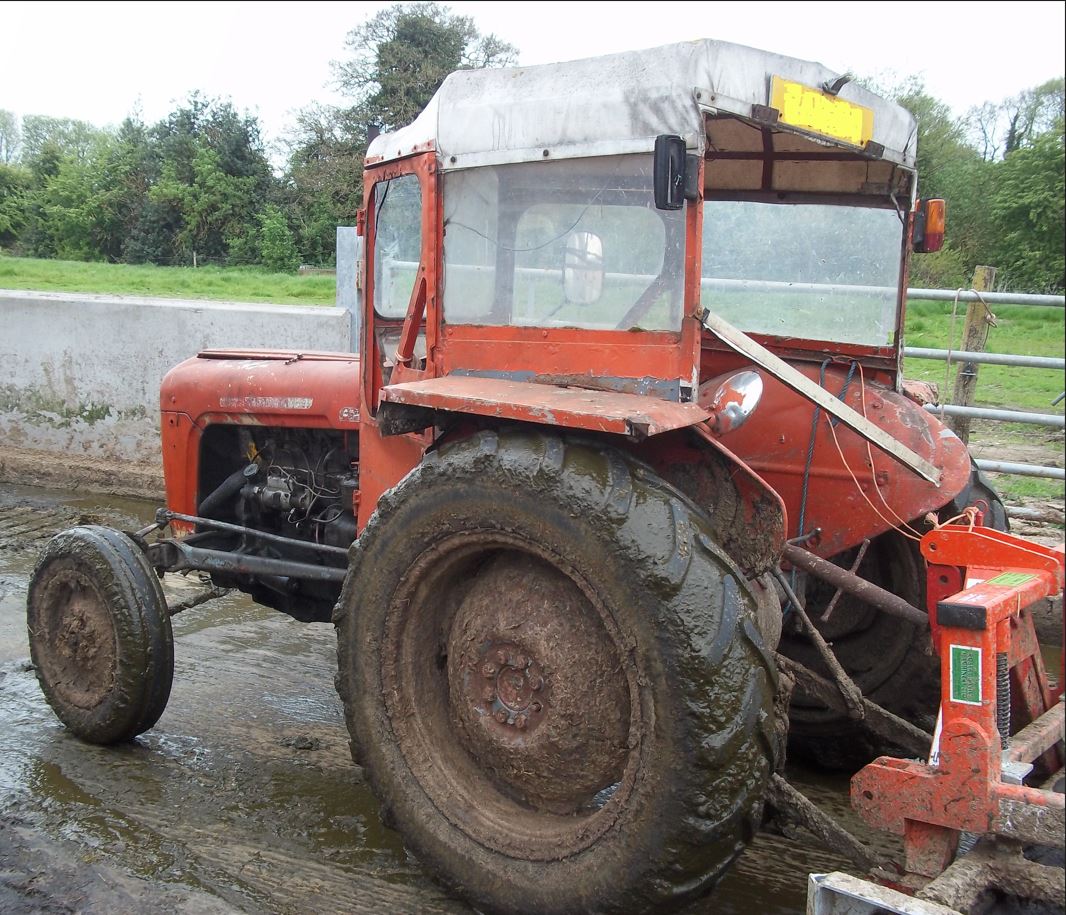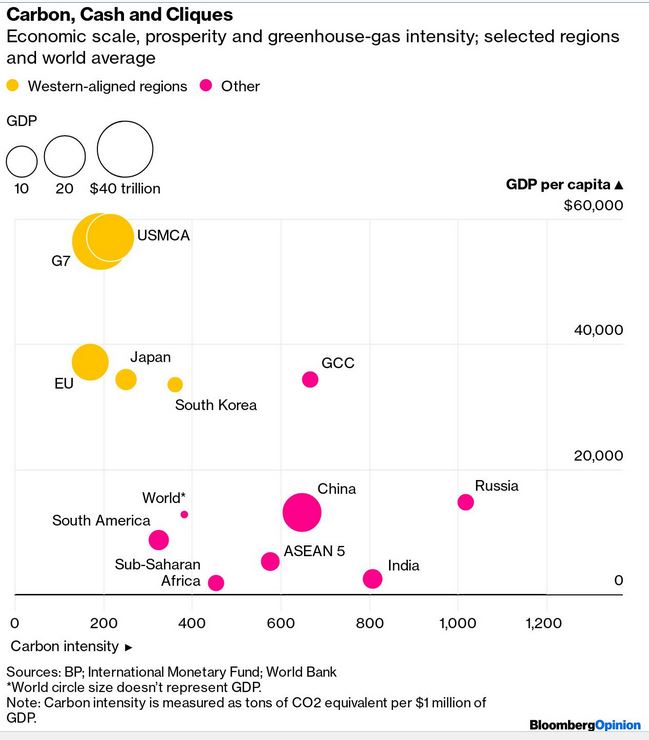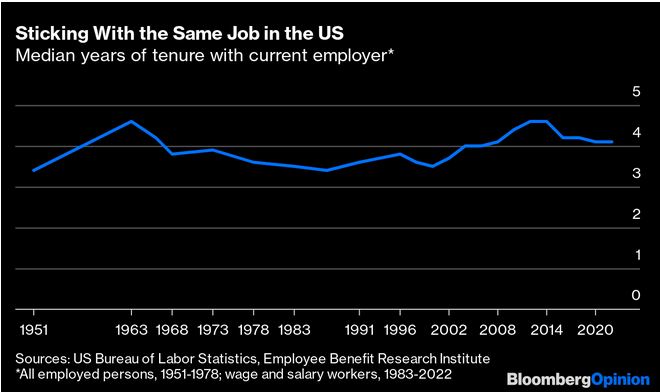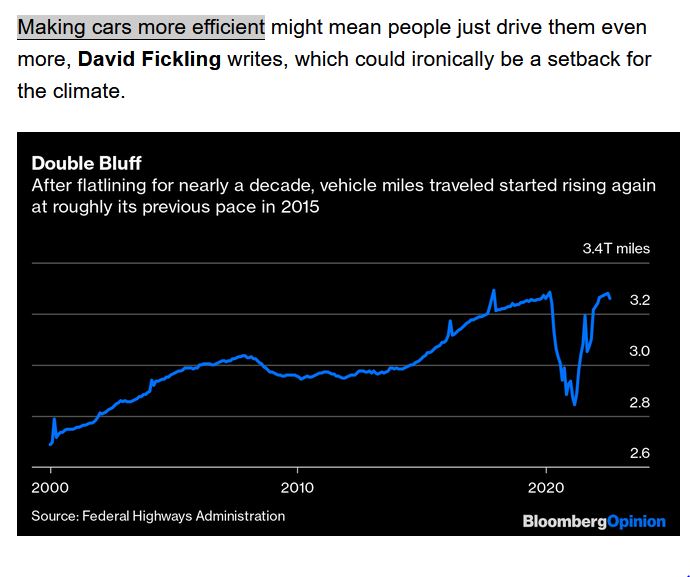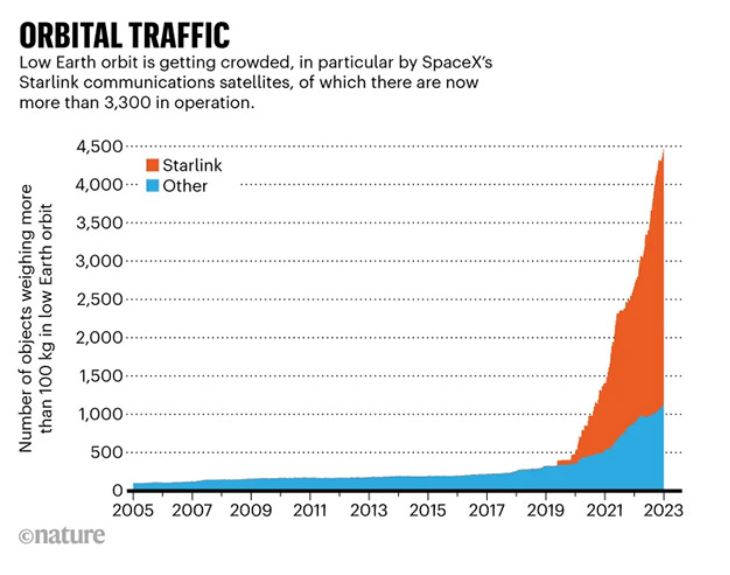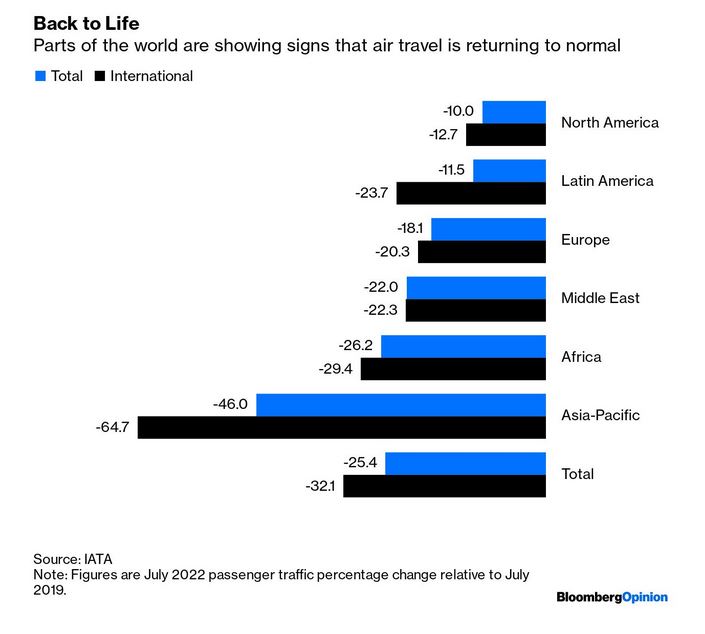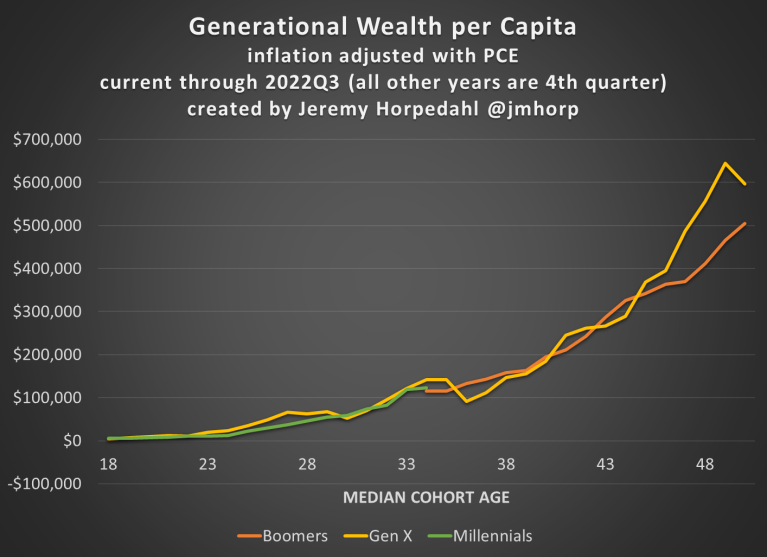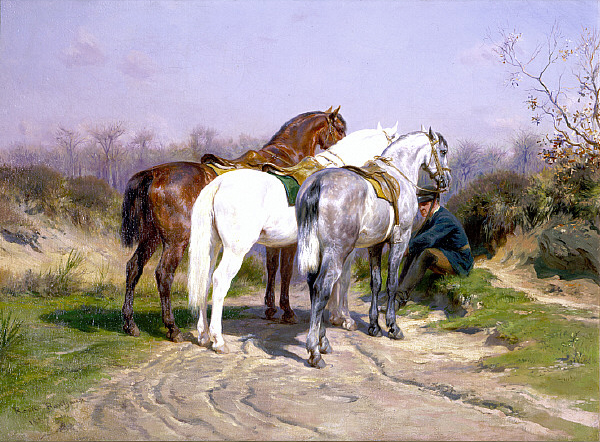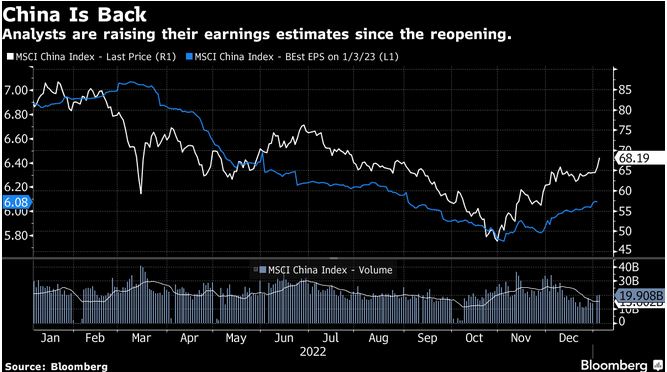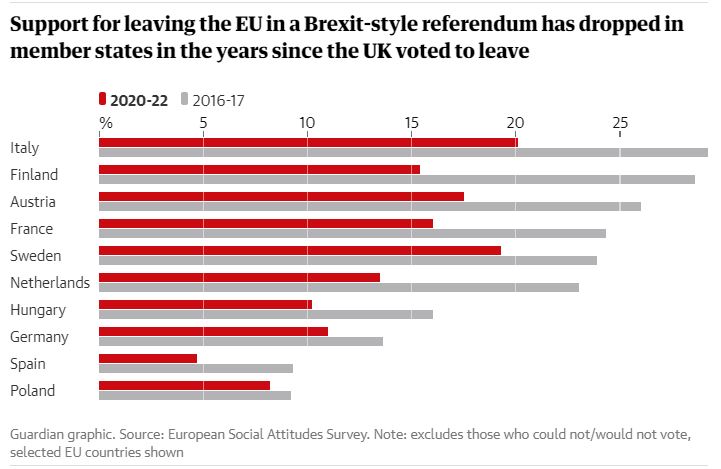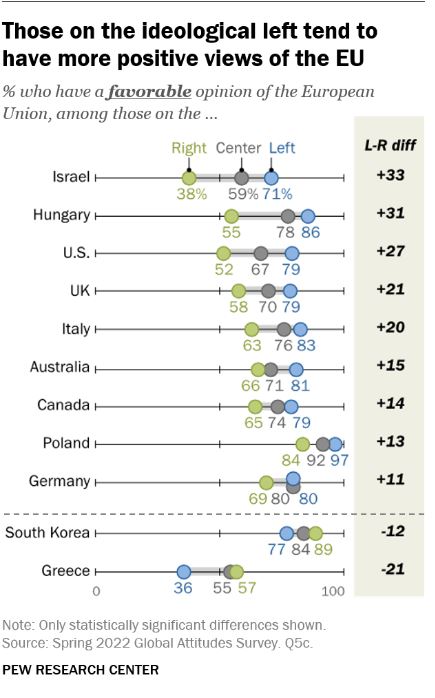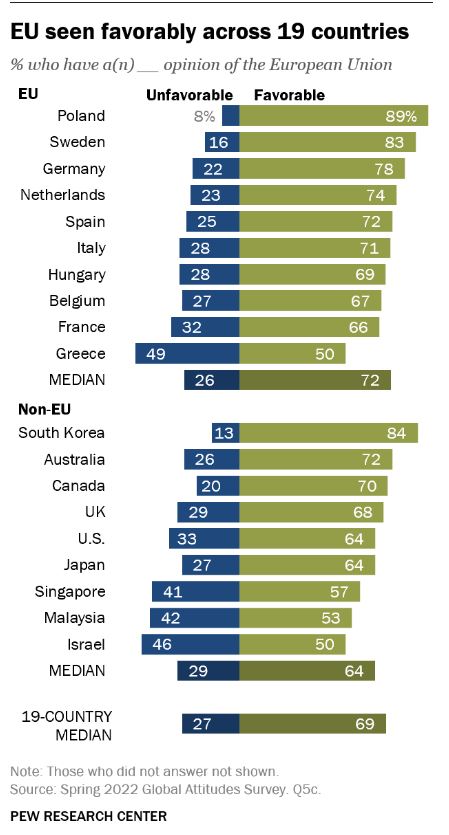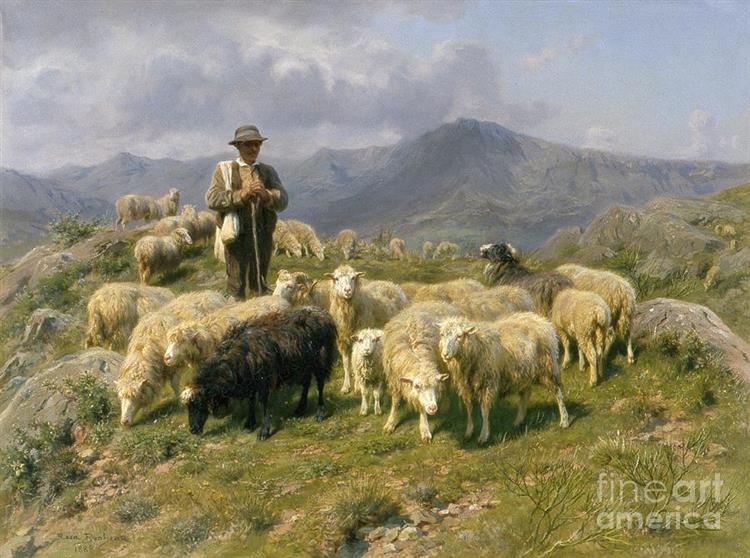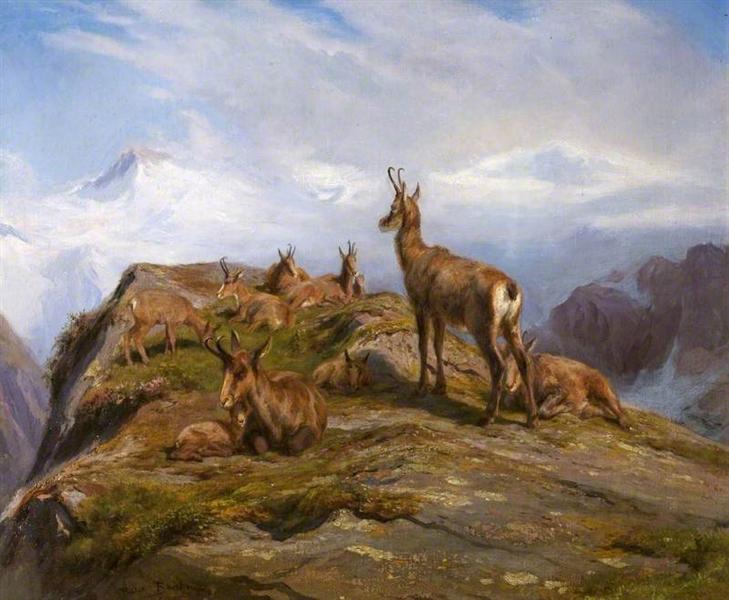|
You
can also view the message online
|
|||||||||||||||||||||||||||||||||||||||||||||||||||||||||||||||||||||||||||||||
 Châtenay-Malabry (FR - 92290), 16 January, 2023 EFITA newsletter / 1062 - European Federation for Information Technology in Agriculture, Food and the Environment The informatique-agricole.org site offers you the possibility of subscribing the RSS feeds of its two newsletters See RSS feeds to implement to ensure that you continue to receive this newsletter To unsubscribe this newsletter, please contact me directely: guy.waksman(a)laposte.net if this link Unsubscribe does not work. 
To correspond with me (GW), please use this address: guy.waksman(a)laposte.net To subscribe the efita newsletter (please ask your friends and colleagues to test this link) Efita Newsletters subscription Massy Ferguson 1935 ? No it is around 1959 MF 35 model Dear Guy, Happy New Year I always enjoy the Efita Newsletter for it’s of interesting information… and jokes! Great poster this month but the caption is inaccurate and no doubt others will have brought it to your attention. Visiting farms on a regular basis we see these original production machines are still in operation, loved and working every day for over 60 years. Not like the others from Eastern Europe or the Far East that are reported to have broken down after a relatively short time while the Fergie still runs. The images attached are not good but the tractors were not the main subject but show them still to be operational so even in these times their quality is taken for granted. Thanks Best regards Contact: Phil Metcalfe BSc , MSc, C Eng, C Env, MIAgrE, FACTS E-mail: phil.metcalfe(a)adas.co.uk Weekly newsletters about ICT in Agriculture in English and French Both newsletters have around 5000 subscribers. >>> Last weekly EFITA Newsletters in English (created in 1999) Efita Newsletters >>> Last weekly AFIA Newsletters in French (created more than 20 years ago in 1997) Afia Newsletters >>> Statistics for the latest efita newsletter >>> Last issue of the afia newsletter >>> Last available satistics for the afia newsletter Le Roi de la forêt, 1878, par Rosa Bonheur (1822-1899)
6 Reasons Your Digital Innovations Can Fail to Reach Adoption, by Laura Scanlon on January 12, 2023 .../... How to bridge the critical adoption chasm? Here’s what our team recommends. 1. Recognise adoption as a critical phase and skill set: Orgs often either focus solely on innovation or skip from innovation directly to scale. Understand that adoption requires a very different skill set, and resource it accordingly. 2. Create an adoption roadmap: From the start, create and share an adoption roadmap that clearly outlines activities, timelines, and quantified adoption goals. This is an excellent way to set and manage expectations, while helping the organisation to understand where they’re headed, where they are now, and a feasible roadmap for closing that gap. 3. Build ample runways: We estimate an ambitious yet achievable timeline from an innovation’s conception to adoption is roughly 3 years. From the get-go, ensure that resources and funding are ring-fenced for adoption’s expected timeline. Define a healthy adoption velocity that works for your organisation – one that creates momentum, but does not jeopardise the quality of the impact or the safety of the users. 4. Collaborate with end-users: This has two major benefits: Firstly, you create something that’s going to be useful to users’ lives and relevant to their needs. Secondly, when end users are involved in creating the solution, you increase the propensity for adoption because users already feel a sense of ownership and familiarity. These users then become product advocates and can encourage their peers to adopt the new product or service. 5. Launch Minimum Valuable Products: Products that are simple, but complete – not minimum viable products (MVPs). Learn why you should reconsider MVPs here. 6. Measure the right things: Innovation and adoption has to be constantly and realistically measured. You must ensure that you are setting realistic goals for the product or service’s life stage. At Here I Am, we like to measure products using a framework that loosely follows Maslow’s Hierarchy of Needs. We start with the safety and security of users, and as the product matures, ladder up to ‘adds value’ vs ‘previous approaches.’ Learn more about how we ensure the ongoing measurement of digital performance. 7. Manage expectations: Failure is a normal part of the adoption journey, and a great learning opportunity. When something goes wrong, we get wiser on how it can go right. Innovating isn’t a black or white, pass or fail process. When done properly, it’s an iterative learning journey that improves over time. Ensure the wider organisation understands this so they don’t abandon support before adoption can occur. 8. Mobilise the positive and the negative influencers: Identify and collaborate with the most influential people inside the organisation. These will be subject matter experts who are well connected and respected. Lean into the negative influencers – listen to their concerns and evolve products to address their fears. This can be a really powerful way to turn a critic into an influential advocate. 9. Bring the organisation on the journey: Cynicism and fear can often surround innovation – particularly when new products have a potential negative impact on the lives of vulnerable people. Sometimes this can result in the innovation owner giving the idea ‘air cover’ (otherwise referred to as ‘greenhousing’). Air cover is important but hiding the innovation in a ghetto hinders adoption propensity. Instead, provide regular org-wide updates. Be transparent about the challenges, risks, failures, and what the team is doing to overcome them. Invite feedback and close the feedback loop on any valid ideas or concerns raised. Most importantly, understand the critical importance of adoption in ensuring great innovations reach their full potential. See hereiamstudio.com Le Marché aux chevaux (1853), par Rosa Bonheur (1822-1899), New York, Metropolitan Museum of Art
How did we see the future yesterday?? See the incredible collection developed by Alain Fraval VISION Conference January 17-18, 2023, Renaissance Phoenix Glendale Hotel & Spa • Glendale, Arizona, USA The VISION Conference is where the full industry ecosystem meets to map the strategic potential of advanced technology in agribusiness, with a tight focus on the drivers that will succeed in transforming the industry within 3 – 5 years. Innovative traditional ag companies as well as new players bringing proven solutions from other industries are gathering this January at the 2023 VISION Conference. Your VISION registration includes two visionary keynotes, two days of immersive conference sessions, many opportunities to network and connect with peers, two breakfasts, two lunches, and a reception. All this plus a warm getaway with easy accessibility in January. See thevisionconference.com Étude de lionne, par Rosa Bonheur (1822-1899), musée d'Art et d'Histoire de Langres
Tech Hub LIVE July 24-26, 2023, Iowa Events Center, Des Moines, Iowa The third annual Tech Hub LIVE offers an innovative, forward-looking experience with an expansive range of features encompassing all segments of data driven agriculture and attracts the largest gathering of thought leaders and innovative practitioners. - Engage with industry peers and make new meaningful connections - Get exposure to the latest solutions advancing the deployment of agtech innovations - Gain insight and knowledge on proven techniques that can be implemented now See techhublive.com Fossil fuel subsidies: If we want to reduce greenhouse gas emissions we should not pay people to burn fossil fuels Instead of making fossil fuels more expensive, many governments do the opposite — they subsidize them, often to a very high degree. In many countries subsidies are higher than $100 per person per year. It’s understandable that governments care about providing affordable energy. Having access to reliable energy is very important to people. But if these subsidies support the consumption of fossil fuels, they come with very large downsides — air pollution and accelerated climate change. In this article, we discuss why repealing these subsidies is not easy, but it is possible. And the world is slowly making progress.
Agroptima opens a new stage within the Isagri group Entrepreneurship in the agricultural sector is a rarity in Catalonia and the case of Agroptima is one of the few success stories of the local ecosystem. The startup, which develops software to manage farms, has just been acquired by the French group Isagri, one of the major competitors in the sector, which has a turnover of 283 million euros and employs 2,500 people worldwide. The acquisition has been closed through the Isagri subsidiary in Spain for a price that both companies prefer not to share. Together, his business has a turnover of 5 million in this country. Emilia Vila, co-founder of the business together with Anisia Tardà and Ferran Gascón, explains that Agroptima will maintain the brand as well as the entire team, made up of 28 workers. Vila y Gascón will assume new positions of responsibility: the direction of vegetable production, in the first case, and the technical direction, in the second. The company will be directed by Emilie Maigre, the current general director of the Spanish subsidiary. With this operation, Agroptima opens a new stage within one of the large multinationals in the sector. The startup was founded in 2014 in Sant Feliu de Codines and since then, it has had sustained growth in the market. Currently, it has 2,700 clients spread across Spain, France, Central and South America. It sells its software to companies that operate agricultural, livestock and wine-producing farms. “Through our technology, we help our customers increase efficiency, profitability, and sustainability. We also respond to the growing legal and technical obligations of its activity”, explains the co-founder of the business, which demands a fee for the use of technology. With this model, Agroptima invoiced around 930,000 euros and recorded losses of around 200,000 euros, according to data from the Mercantile Registry. Throughout its eight years of life, the company has financed its growth through its own resources and also venture capital. It has raised more than 2.5 million euros, from funds such as Athos Capital, Maxfield Capital and Esade Ban, the network of private investors from the Esade business school. It has also given entry to other reference investors such as Carlos Blanco, who after selling his small part of the capital values the investment positively. “In the agricultural sector, the return takes longer to arrive because the growth of startups is slower than the average in the digital sector. In the case of Agroptima, the wait has been worth it because the startup has proven to add value to the market”, concludes Blanco. See usanews.net Portrait du Colonel William F. Cody (Buffalo Bill), 1889, par Rosa Bonheur (1822-1899)
España: Los dos líderes en software para la agricultura en España se unen para acelerar la digitalización del sector agrícola El grupo ISAGRI, líder europeo en programas informáticos para la agricultura ha adquirido Agroptima, startup Barcelonesa líder en software de gestión de fincas agrícolas, para responder a los retos futuros del sector. La fusión de Agroptima con Isagri España permitirá ofrecer la gama más completa del mercado de soluciones y tecnologías para la digitalización agrícola, ganadera y vitivinícola. De esta forma, respondemos a las crecientes obligaciones legales y a las necesidades de las explotaciones cada vez más tecnificadas en nuestro país. La alianza permitirá a su vez acelerar la expansión a América Latina. Las dos empresas comparten valores comunes de servicio al cliente y unen, desde este momento, sus capacidades y competencias. Emilie Maigre seguirá dirigiendo ISAGRI España, Emilia Vila asume la dirección de la actividad de producción vegetal y Ferran Gascon, la dirección técnica. Agroptima se fundó en 2014 por Emilia Vila, Ferran Gascon y Anisia Tardà, con el objetivo de hacer las explotaciones agrícolas más eficientes, rentables y sostenibles. En la actualidad cuenta con 28 empleados y tiene 2700 clientes repartidos en España, Francia, América Central y del Sur. Isagri ofrece en España una gama completa de soluciones de gestión para responder a los principales retos de los agricultores, bodegas y ganaderos. Con esta fusión Isagri S.L. y Agroptima S.L., conjuntamente, llegarán a más de 6000 clientes en España con un equipo de 70 personas y una facturación consolidada de 5 millones de euros. Sobre Groupe ISAGRI: una historia de éxito Creado en Beauvais en 1983 por Jean-Marie Savalle, su director general, el Grupo ISAGRI revolucionó muy rápidamente el mercado agrícola francés al hacer que la informática de gestión fuera accesible al mayor número de profesionales agrícolas posible. Cifras claves del Grupo ISAGRI: ✔ Cifra de negocio: 283 M€ ✔ 2.500 trabajadores, de los cuales, 180 en 12 países: España, Alemania, Bélgica, Canadá, China, Italia, País Bajos, Polonia, Portugal, Rumania, Reino Unido y Suiza. ✔ 9o desarrollador informático francés en 2022 (Truffle 100) El grupo es líder en servicios digitales en Europa con AGIRIS-EIC, AGIRIS Entreprises, AKANEA, BATAPPLI, CECURITY, CENTRALGEST, HEXANET-SOLUCEO, IRIUM, ISAGRI, KERHIS, LANDMARK SYSTEMS; y tiene clientes en 5 continentes, a través de sus 12 filiales en Europa, América y Asia. Grupo ISAGRI dispone de una oferta global de servicios independientes y complementarios: ✔ Sistemas de información y soluciones de gestión dedicados: agricultores, viticultores, cooperativas, industrias agroalimentarias y comercializadoras, empresas de transporte y logística, alquiler, venta, mantenimiento de equipos y vehículos. ✔ Software de gestión para contables y sus clientes, en particular, para el sector de la construcción. ✔ Software de archivo electrónico, caja fuerte digital, plataforma de documentos desmaterializados para el sector agropecuario, no agropecuario y asesores contables. ✔ Telecom, telefonía, hosting, outsourcing y transición a infraestructuras digitales de las organizaciones. ✔ Marketing y estudios técnicos ✔ Información, apoyo, ferias y eventos profesionales. El Grupo ISAGRI siempre ha puesto la relación con el cliente y la innovación en el centro de su desarrollo y crea 150 puestos de trabajo al año. El Grupo ISAGRI aspira a convertirse en 2023 en el líder mundial en agricultura digital, líder europeo en soluciones de gestión empresarial vertical y líder francés en software para la gestión contable. Ver contacto.isagri.es Excess fertilizer use: Which countries cause environmental damage by overapplying fertilizers? Fertilizers have transformed the way the world produces food. They have not only brought large benefits for food security, but they also bring environmental benefits through higher yields, and therefore less land use. But there can be a downside when we overapply fertilizers. No matter whether they are natural fertilizers (such as manure) or synthetic ones, excess nutrients are washed off and pollute the natural environment. Nitrogen and phosphorus are the two main fertilizers that farmers add to their fields. In this article, we present research showing that nearly two-thirds of the nitrogen we use on our crops becomes a pollutant, and more than half of the phosphorus we use does. Countries generate vastly different amounts of pollution through their agricultural practices. Some countries produce almost none, while others produce hundreds of kilograms per hectare of cropland.
FutureFarming.com > Precision ag – what lies ahead Where is precision ag at these days, and where are we heading? Dr. Steve Shirtliffe, Professor in the College of Agriculture and Bioresources at the University of Saskatchewan, talks about the (near) future of precision agriculture. > Machine Vision is Key for Agriculture 4.0 Did you know that machine vision is part of many automation and robotics applications used in agriculture? The software products of MVTec enable innovative technologies and best-in practice solutions. > Running two machines from one cab | Field Trials E8 PART 2 Part two of Future Farming’s Field Trials chat with Dustin Burns – a farmer and rancher from Wynyard, Saskatchewan – highlights how the ever-present threat posed by labour shortages has spurred their focus on autonomous solutions. Dustin shares his experiences with Raven’s OMNiPOWER platform. > Simplifying the process for calculating soil carbon credits A study led by researchers at the Agroecosystem Sustainability Center (ASC) at the University of Illinois Urbana-Champaign provides new insights for quantifying cropland carbon budgets and soil carbon credits. > Field robots: Who will become Ag Robot of the Year in 2023? Future Farming magazine and the international robot event FIRA are introducing the Ag Robot Award of Year election. Outdoor field and harvest robots that crop growers can buy or rent in 2023 are eligible. The deadline for submitting your robot has been extended to 16 January. >On-the-go grain quality analysis Canadian start-up Ground Truth Ag wants to bring the lab into the field by developing a lab-quality grain analysis system which farmers can attach directly to their combine. > Smart irrigation valve to help growers save water The Lumo smart irrigation valve has a built-in controller, built-in flow and pressure sensors, and is completely wireless and internet connected. > Zilus: a robotic farmhand with strong collaboration skills At the Vinitech trade show in Bordeaux (France), Sabi Agri presented its new ZILUS robot for the first time. This 100% electric straddling robot is not the first on the market, but it did show some remarkable features. > Fertilizing: John Deere ExactShot applies starter fertiliser per seed John Deere's ExactShot planting technology uses sensors and robotics to place starter fertiliser precisely onto seeds as they are planted in the soil. > Drones video: This mega-drone puts farmers in the pilot’s seat Ryse Aero Technologies, a ultralight electric vertical takeoff and landing (eVTOL) company, showed its all-electric aerial ATV called Recon at the CES show in Las Vegas. > Plant cloning: Automated plant cloning for a higher crop yield Australian company NuPlant has developed a robotic plant cloning system that delivers significantly improved plants from breeding programs, for multiple species. > Grain quality: Checking the quality of grain with a mobile phone South Australian company GoMicro has released its Assessor, a device, that allows Australian farmers to assess the physical quality of their grains, using their phones. See futurefarming.com Labourage nivernais, dit aussi Le Sombrage, 1849, par Rosa Bonheur (1822-1899)
Prosperity and greenhouse-gas intensity
In France, we are able to stay all our professional life with the same employer…
The more efficient our cars are, the more miles we drive
Starlink success
Air travel, back to life
Relais de chasse (1887) , par Rosa Bonheur (1822-1899), musée d'Art de Saint-Louis
What Exactly Does 'Agriculture 4.0' Mean? Contributing writer Reinder Prins examines the theme of next week's VISION Conference "Harnessing the Power of Agriculture 4.0". See globalagtechinitiative.com Sultan et Rosette, les chiens des Czartoryski (1852), par Rosa Bonheur (1822-1899), musée national de Varsovie
2022 AgTech Venture Capital Investment and Exit Roundup AgTech saw investment dollars drop from 2021 last year, but the number of deals showed strong growth. See globalagtechinitiative.com Ag Tech Talk Podcast: Managing the Farm from the Cloud Sujit Janardanan, Cropin’s Chief Marketing Officer, discusses the company’s plans to digitize one-third of the crop land on the planet by 2025. See globalagtechinitiative.com China back to normal?
Inflation, back to normal?
2023 Predictions for the Global Agri-Food and Agritech Sectors Digitization of agriculture is one way to reduce the climate impact of farming and the looming economic slowdown in certain regions. See globalagtechinitiative.com Automated FruitScout Named a Top 10 Precision Farming Solution Provider of 2022 The annual Top 10 list by Agri Business Review Magazine recognizes innovation and entrepreneurship in the ag and technology space. See globalagtechinitiative.com Support for leaving EU has fallen significantly across bloc since Brexit People less likely to vote leave in every EU member state for which data was available than in 2016-17, survey finds
Veaux (1879), par Rosa Bonheur (1822-1899), par Rosa Bonheur (1822-1899), New York, Metropolitan Museum of Art
Water Vision 2050 As much water as there is in the world, only about one-half of 1% of it is drinkable. ARS is leading a team of over 40 scientists to identify and formulate a plan to address the most significant challenges to the world’s water resources and agricultural production by the year 2050. See tellus.ars.usda.gov
The AI revolution Artificial intelligence made a sudden leap forward last year, with deep learning models like DALL-E, Midjourney, and ChatGPT delighting millions of people with impressive, if uncanny, artwork and text. But how will these technologies impact our lives? Will they really replace artists and writers? And what are the risks and benefits of increasingly powerful AI? In the latest episode of The Human Progress Podcast, policy analyst and technology expert Will Duffield joins Chelsea Follett to discuss these questions and more. .../... How will advances in artificial intelligence improve our lives, and what challenges are they likely to pose? Policy analyst in the Cato Institute’s Center for Representative Government Will Duffield joins Chelsea Follett to discuss the policy implications of these questions and more. Recent advances in artificial intelligence have been all over the news, from DALL-E to ChatGPT. How significant are they really? Recently, there have been several advances in large language modeling. Essentially, by gathering large corpuses of language training data, AI pioneers have been able to derive ever more effective models. These large language models don’t reason deductively like humans. Instead, they infer information by synthesizing great reams of data. But even if we see these models as mere curve fitters, things that are good at recognizing patterns, their pattern recognition is useful to us and, in some cases, even outstrips our abilities. There’ve been studies throwing millions of iris images at artificial intelligence. And while we don’t know of any difference between the male and female iris, this AI has been able to, with a fair degree of certainty, determine whether the iris belongs to a man or a woman. So, it’s seeing a pattern that we don’t even know exists. It does this by comparing irises in a way that you or I never could. By iris 20, they’d all look the same to us, but a machine doesn’t have the same constraints. And so, it can make associations that might not occur to us. How else are AI technologies being used in the real world? One of the more exciting areas is drug discovery, using AI to predict the results of combining molecules rather than synthesizing everything in a lab. A lot of that early-stage testing can now be done virtually using artificial intelligence. There are also tools like Copilot at GitHub, which allow someone to explain the code that they would like and then receive code generated by an AI. It can help a novice coder learn or punch above their weight much more quickly, turning to the AI in the same way you might turn to a more experienced coder. The most exciting possibility to me is that AI will help us interface with complex modern systems. Everything from your county website, where you pay your taxes and deal with parking tickets, to payroll software, to booking a flight can be very difficult to navigate. In the most hopeful world, AI will be an everyday interface between human beings and the various systems we’ve built that don’t tend to work well with us. How do you think advances in AI technology will impact the job market? Unlike something like the power loom, we aren’t talking about displacing manual labor but instead rote white-collar tasks like data entry, basic research, and legal assistance, as well as some creative tasks. There’s been a tremendous amount of concern from artists about generative AI. And while lots of people are using it, not all that use causes displacement. Lots of people have the new Lensa profile picture, but very few of those people were previously paying an artist to create a profile picture for them. They were relying on a photograph or stock imagery. So, a lot of this fills in the parts of the market that weren’t well served before. At the end of the day, we still need people in charge of these tools. And at their best, they can save us from drudge work that, frankly, people deserve better than. It’s undignified for people to spend all day acting like a machine in a toll booth. What are some challenges posed by artificial intelligence? People often bring up the so-called paperclip maximizer scenario. Say you have an AI that is ostensibly aligned with your goals, and you set it to make a lot of paperclips. If it’s very powerful and can have factories built and draw up resources, it will slowly start making everything into paperclips. That would obviously be a bad scenario for everyone. So, it’s not just thinking of the genocidal evil machine that wants to destroy all humans, but also how to put side constraints on AI to prevent it from taking harmful steps to achieve its goal. Another challenge is that, if AI is an effective personal assistant, it won’t just be an effective personal assistant for good people. We can imagine a friendly artificial assistant helping people who otherwise couldn’t build a bomb to build one. There’s a lot of debate right now about how to either regulate AI or place side constraints on the models themselves to resolve these challenges. Getting that right is important, but it will also be very important not to neuter this technology or gate it away from the everyman. If only the vetted or powerful have access to it, then you’re just going to exacerbate existing disparities in wealth and power. Even though there are potentials for misuse, many of those cases seem worse in a world in which only some people have access to the technology. …/… See humanprogress.org Leftist have more positive views of the EU
The Zantac Cases and Admissibility of Scientific Evidence / American Council on Science and Health, by Barbara Pfeffer Billauer JD MA (Occ. Health) PhD - January 3, 2023 Acid indigestion. Just the words give me heartburn. Multiple remedies are available, both prescription and over-the-counter. But hundreds of thousands of people are claiming that they got cancer from one of them: Zantac. Their cases are pending in various courts around the country. The decision regarding the admissibility of their expert testimony in federal cases was just released. So, how did the plaintiffs fare? See acsh.org Can We Live With NDMA? By Susan Goldhaber MPH — January 3, 2023 A series of class action cases claim that Zantac can cause cancer. It is not Zantac per se, but a degradation-produced, N-nitrosodimethylamine (NDMA), which may cause cancer at high doses. What do we know about NDMA? See acsh.org First Vaccine for Honey Bees Approved by USDA, by Emily Baron Cadloff, Jan 10, 2023 .../... The vaccine is intended to help honeybees—one species of pollinators at risk of extinction, facing habitat loss and other threats—fight back against American foulbrood, a destructive and deadly disease that can wipe out entire bee colonies. American foulbrood spreads through spores and kills bees when they’re still in a pupal stage, essentially eliminating the bee larvae, turning it dark brown and rotten. .../... See modernfarmer.com/ Shepherd of the
Pyrenees, 1888, par Rosa Bonheur (1822-1899)
The creation of this efita newsletter is spnsored by Acta Digital Services and its distribution by vitisphere.com Please, contribute to the content of your efita newsletter, and advertise your events, new publications, new products and new project in this newsletter. Without your support, it will not survive! Contact: Guy WAKSMAN E-mail: guy.waksman(a)laposte.net To read this newsletter on our web site See Efita The archives of this newsletter See Efita Do not miss the Virus Jokes in English and French About the EFITA mailing list You can use the efita moderated list (> 15000 subscribers) to announce any event / product / web site / joke (!) related to IT in agriculture, environment, food industry and rural areas. If you want to subscribe a friend, please fill in his form. If you do not wish to receive our messages, please fill in the following form... |

